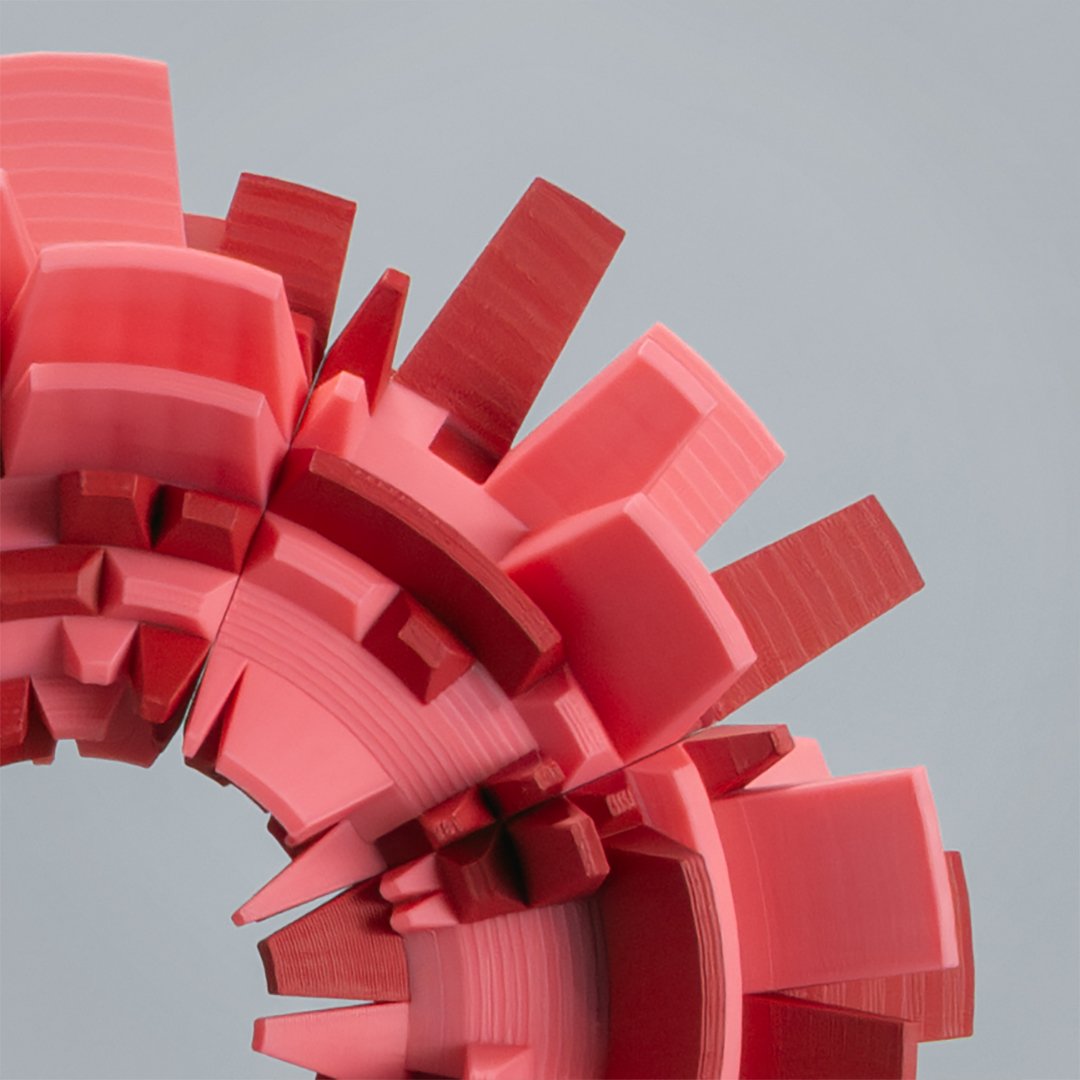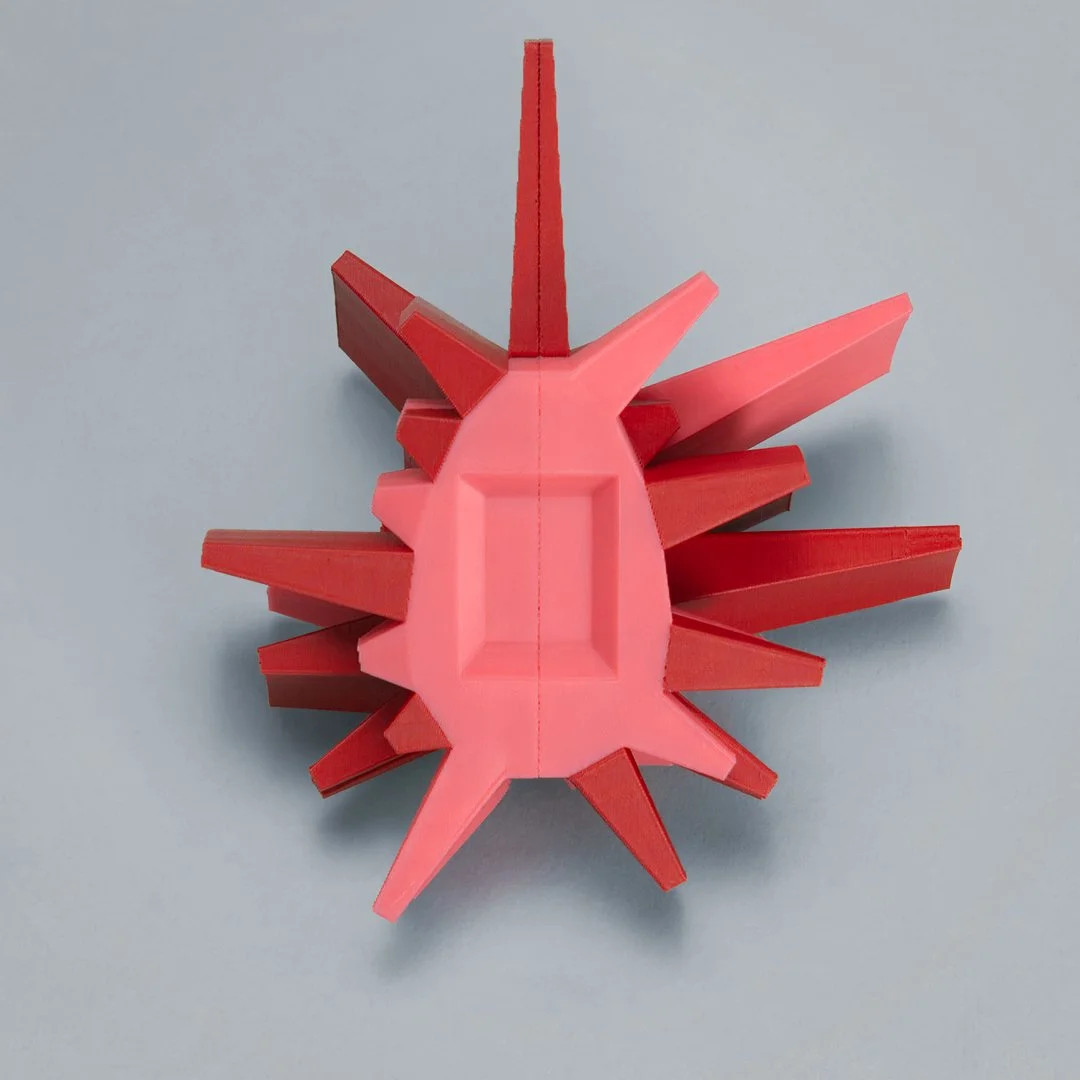20 GOTO 10 REM 8-BIT. 2025
20 GOTO 10 REM 8-BIT is a modular 3D-printed sculpture composed of eight parts. Each part contains magnets, allowing them to be snapped together in any order. With no predefined arrangement, the parts can be combined in a total of 7! = 7 × 6 × 5 × 4 × 3 × 2 × 1 = 5040 ways. Adapted from the sequential sculpture 20 GOTO 10, the work explores themes of time and memory.
Time is linear; it only moves forward. Our recollection of time, our memories, are non-linear. We don’t remember chronologically, working backwards from the present. Nor do we recall experiences in a linear sequence. Our brains reconstruct moments from our senses and emotions in ways that are meaningful in the present. 20 GOTO 10 REM 8-BIT references this experience. Each part is composed of fins and recesses that represent memories. The parts can be arranged in 5,040 different ways. While the relationships between parts change, the whole remains largely the same. The sculpture is recognizable regardless of the arrangement.
The title of this artwork is derived from the sequential sculpture 20 GOTO 10. It is a common line of code in 8-bit computer programming. “REM” is a command in the same language, an abbreviation of the word “remark.” It is the formal way of adding a comment. In written English, one would use parentheses (like this). The appended title acknowledges the artwork’s geometric aesthetic. An 8-bit computer processes data in 8-bit chunks, that is, eight binary digits (ones or zeroes). This limits its processing and memory ability. The sculpture is structured around the number eight. It has eight parts, each composed of eight segments.
20 GOTO 10 REM 8-BIT
Plastic, magnets, alluminium.
23 x 15 x 33cm / 9 x 6 x 13 in.
Edition of 32 & 4 AP’s



